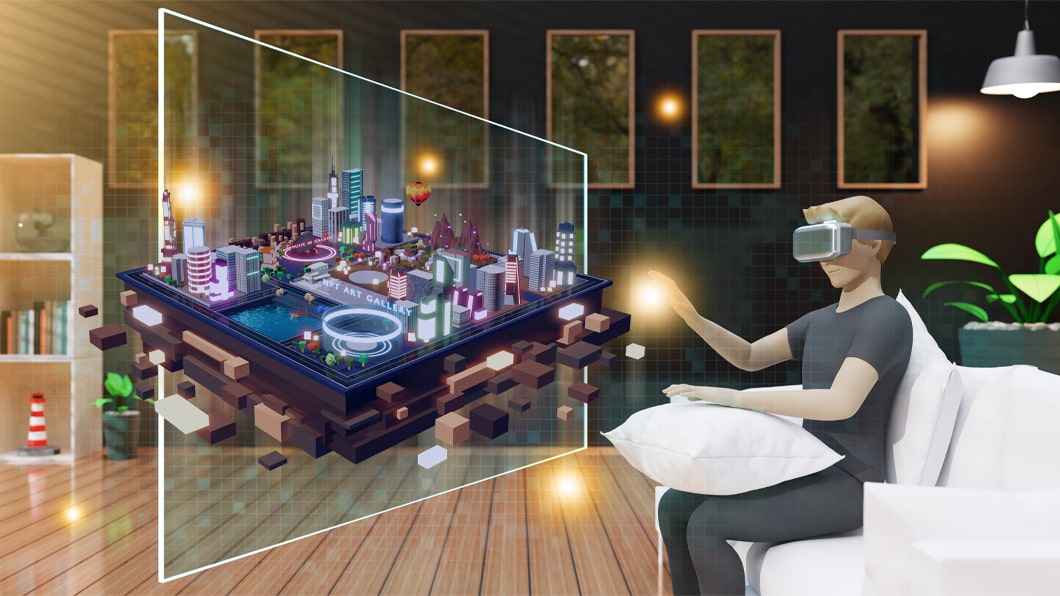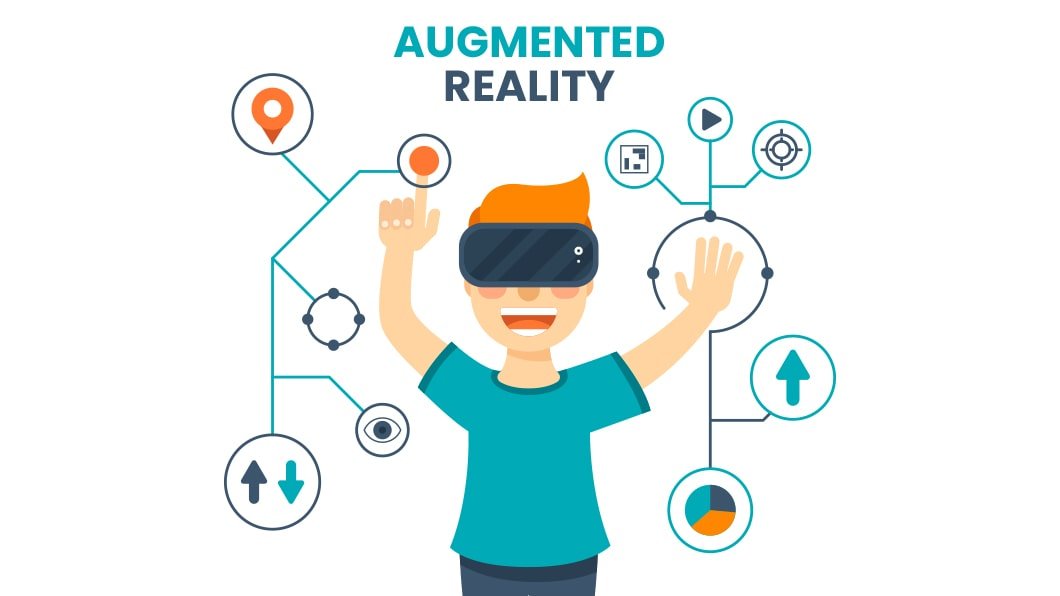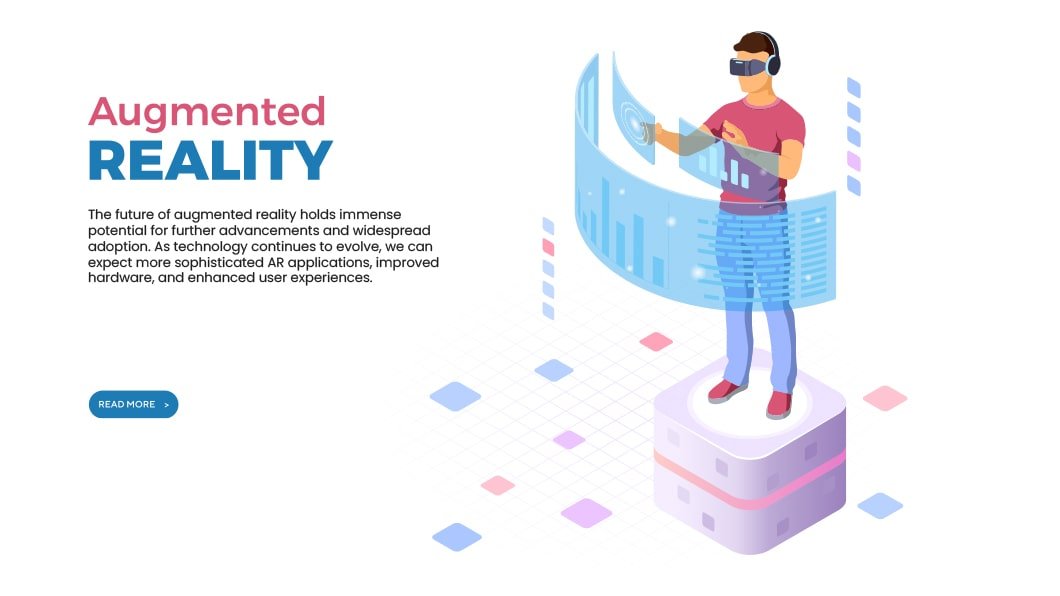
Augmented Reality (AR) and its Applications
Introduction
Augmented Reality (AR) is a technology that overlays digital information and virtual objects onto the real world, enhancing our perception and interaction with the environment. It has gained significant attention and popularity in recent years due to its potential to transform various industries and sectors. In this article, we will explore what augmented reality is, how it works, and its wide range of applications.
1. What is Augmented Reality (AR)?
Augmented Reality (AR) refers to the integration of digital content and information into the real-world environment, creating an enhanced and interactive experience for users. Unlike virtual reality, which immerses users in a completely virtual environment, augmented reality blends virtual elements with the real world. It enables users to see and interact with virtual objects, graphics, and information as if they exist in the physical space around them.
2. How does Augmented Reality work?
Augmented Reality relies on advanced technologies such as computer vision, tracking systems, and display devices to overlay digital content onto the real world. It involves the following key steps:
Sensing the environment: AR systems use sensors, cameras, and other input devices to capture the real-world environment and gather data about the user’s surroundings.
Processing and recognizing: The collected data is processed and analyzed using computer vision algorithms to identify objects, surfaces, and spatial information.
Overlaying virtual content: Once the real-world environment is recognized, augmented reality systems overlay virtual content onto the user’s view, aligning it with the physical space.
- Interaction: Users can interact with the virtual content through gestures, voice commands, or other input methods, enabling a seamless integration of the digital and physical worlds.

Augmented Reality has found applications in various industries and domains, revolutionizing the way we interact with technology and information. Let’s explore some of its key applications:
- Augmented Reality in Gaming
AR has transformed the gaming industry by bringing virtual characters and objects into the real world. Games like Pokémon Go introduced the concept of location-based AR, where players explore their surroundings to capture virtual creatures. Augmented reality also enables immersive gaming experiences by overlaying game elements onto the physical environment, creating a unique blend of fantasy and reality. - Augmented Reality in Retail
In the retail sector, AR has the potential to enhance the shopping experience by allowing customers to visualize products in real-time. By using AR-enabled devices, shoppers can try on virtual clothes, place furniture in their homes before making a purchase decision, or even virtually test cosmetics. Augmented reality bridges the gap between online and offline shopping, providing a more interactive and personalized experience for customers. - Augmented Reality in Education
Augmented reality is revolutionizing the education sector by making learning more immersive and engaging. Students can visualize complex concepts and subjects through interactive 3D models, simulations, and overlays. AR technology also enables virtual field trips, where students can explore historical sites, landmarks, and natural wonders without leaving the classroom. It fosters creativity, critical thinking, and active participation, transforming traditional learning environments. - Augmented Reality in Healthcare
The healthcare industry is leveraging augmented reality to improve patient care, medical training, and surgical procedures. Surgeons can use AR headsets to overlay patient data, diagnostic images, and real-time guidance during surgeries, enhancing precision and reducing risks. AR also assists in medical education by providing interactive anatomy lessons and simulations, allowing students and healthcare professionals to practice procedures in a realistic virtual environment. - Augmented Reality in Architecture and Design
Architects and designers are utilizing augmented reality to visualize and present their projects in a more immersive way. With AR tools, clients can walk through virtual architectural models, experience interior designs, and assess spatial arrangements before construction begins. Augmented reality empowers architects to communicate their vision effectively and make real-time changes based on client feedback, saving time and resources. - Augmented Reality in Manufacturing and Engineering
In the manufacturing and engineering sectors, AR plays a crucial role in streamlining processes and improving productivity. It enables technicians to access real-time data, instructions, and remote assistance directly through smart glasses or devices. AR-guided instructions can help workers assemble complex machinery, perform maintenance tasks, and troubleshoot issues efficiently, reducing downtime and minimizing errors. - Augmented Reality in Tourism and Travel
Augmented reality has transformed the way we explore and experience new destinations. Tourists can use AR apps to discover historical information, points of interest, and interactive guides while visiting museums, landmarks, and tourist attractions. AR enhances the travel experience by providing real-time translations, navigation assistance, and immersive storytelling, making every trip more enriching and memorable. - Augmented Reality in Marketing and Advertising
Marketers are utilizing augmented reality to create interactive and captivating campaigns. AR enables brands to engage with their customers in innovative ways, such as virtual try-on experiences, interactive product demonstrations, and immersive storytelling. By integrating AR into marketing strategies, companies can create unique and memorable experiences that resonate with their target audience, driving customer engagement and brand loyalty. - Augmented Reality in Training and Simulation
AR is widely used in training and simulation scenarios across various industries. From military training to flight simulations, AR provides a realistic and immersive environment for trainees to practice skills and procedures. It offers hands-on experience without the risks and costs associated with real-life training scenarios. AR-based simulations enhance learning outcomes, performance, and safety in critical domains.
Future of Augmented Reality

The future of augmented reality holds immense potential for further advancements and widespread adoption. As technology continues to evolve, we can expect more sophisticated AR applications, improved hardware, and enhanced user experiences. Augmented reality has the potential to revolutionize industries such as healthcare, education, retail, and entertainment, creating new opportunities for innovation and growth.
Challenges and Limitations of Augmented Reality
While augmented reality presents exciting possibilities, there are challenges and limitations that need to be addressed. These include technological limitations, such as the need for better battery life, improved tracking accuracy, and more seamless integration with existing devices. Additionally, privacy concerns and ethical considerations surrounding data collection and usage in AR applications require careful consideration. Another challenge is the high cost of AR hardware and development, which limits its accessibility to a wider audience. Additionally, there is a learning curve associated with the adoption of AR technologies, requiring training and familiarization for users to fully utilize its potential.
Despite these challenges, ongoing research and development efforts are focused on overcoming these limitations and expanding the capabilities of augmented reality.
Conclusion
Augmented reality is a transformative technology that merges the digital and physical worlds, opening up endless possibilities across various industries. From gaming and education to healthcare and marketing, AR is revolutionizing the way we interact with our environment and enhancing our everyday experiences. As technology continues to advance, the future of augmented reality holds great promise for further innovation and widespread integration.
FAQs(Frequently Asked Questions)
FAQ 1: What devices are required to experience augmented reality?
To experience augmented reality, you can use devices such as smartphones, tablets, or dedicated AR headsets.
FAQ 2: Is augmented reality only used for entertainment purposes?
No, augmented reality has applications beyond entertainment. It is widely used in industries such as retail, education, healthcare, and manufacturing.
FAQ 3: Are there any safety concerns associated with augmented reality?
Safety concerns in augmented reality include potential distractions and users’ lack of awareness of their physical surroundings. It is essential to use AR responsibly and be mindful of one’s environment.
FAQ 4: Can augmented reality be used for training purposes?
Yes, augmented reality is extensively used for training and simulation scenarios across industries like healthcare, aviation, and the military.
FAQ 5: What are the future prospects of augmented reality?
The future of augmented reality looks promising, with ongoing advancements in technology and increased adoption in various sectors. It is expected to continue transforming industries and offering new possibilities for innovation.





